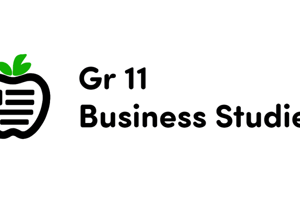Podcast
Questions and Answers
What is one advantage of flexible work patterns from the employee perspective?
What is one advantage of flexible work patterns from the employee perspective?
- Less complex management
- Greater job satisfaction (correct)
- Consistent training opportunities
- Increased job security
What is a perceived disadvantage of flexible work patterns for employers?
What is a perceived disadvantage of flexible work patterns for employers?
- Increased workforce motivation
- Lower direct costs
- Reduced need for planning
- Higher direct costs (correct)
How can flexible work patterns impact employees' mental health?
How can flexible work patterns impact employees' mental health?
- By promoting higher skills acquisition
- By leading to constant renegotiation of employment relationships (correct)
- By reducing stress effectively
- By increasing job security
Which of the following is NOT a disadvantage of flexible work patterns for employees?
Which of the following is NOT a disadvantage of flexible work patterns for employees?
Which factor may make flexible work patterns less viable for employers?
Which factor may make flexible work patterns less viable for employers?
What is meant by 'numerical flexibility' in a workplace context?
What is meant by 'numerical flexibility' in a workplace context?
Which of the following describes 'work-time flexibility'?
Which of the following describes 'work-time flexibility'?
What is a primary characteristic of the flexible-firm model?
What is a primary characteristic of the flexible-firm model?
How has smart information communication technology (ICT) influenced the workplace?
How has smart information communication technology (ICT) influenced the workplace?
What key aspect distinguishes organisational flexibility from traditional management practices?
What key aspect distinguishes organisational flexibility from traditional management practices?
Which of the following is NOT a form of flexibility mentioned in the content?
Which of the following is NOT a form of flexibility mentioned in the content?
What effect has the convergence of telecommunications and ICT had on modern work patterns?
What effect has the convergence of telecommunications and ICT had on modern work patterns?
What is a potential criticism of the flexible-firm model?
What is a potential criticism of the flexible-firm model?
What is the primary benefit of job crafting in an organization?
What is the primary benefit of job crafting in an organization?
Which of the following is a challenge of virtual work arrangements?
Which of the following is a challenge of virtual work arrangements?
Which aspect is NOT typically reviewed when integrating virtual workers into an organization?
Which aspect is NOT typically reviewed when integrating virtual workers into an organization?
How do idiosyncratic jobs benefit an organization?
How do idiosyncratic jobs benefit an organization?
What do employers perceive as an advantage of flexible work patterns?
What do employers perceive as an advantage of flexible work patterns?
Which managerial aspect is crucial for the success of virtual work arrangements?
Which managerial aspect is crucial for the success of virtual work arrangements?
What is a potential downside of having blended teams with both virtual and physically present workers?
What is a potential downside of having blended teams with both virtual and physically present workers?
How does the Internet of Things (IoT) assist in decision-making?
How does the Internet of Things (IoT) assist in decision-making?
Flashcards
Organisational Flexibility
Organisational Flexibility
The ability of an organization to adjust its workforce size, composition, responsiveness, and costs to meet its goals.
Numerical Flexibility
Numerical Flexibility
The ability to easily and quickly adjust the workforce size in response to economic conditions.
Work-Time Flexibility
Work-Time Flexibility
The ability to adjust the number of hours employees work.
Functional Flexibility
Functional Flexibility
Signup and view all the flashcards
Flexible-Firm Model
Flexible-Firm Model
Signup and view all the flashcards
Smart ICT
Smart ICT
Signup and view all the flashcards
Cyberspace
Cyberspace
Signup and view all the flashcards
Talent Cloud
Talent Cloud
Signup and view all the flashcards
Flexible Work Patterns
Flexible Work Patterns
Signup and view all the flashcards
Employer Advantages of Flexible Work
Employer Advantages of Flexible Work
Signup and view all the flashcards
Employer Disadvantages of Flexible Work
Employer Disadvantages of Flexible Work
Signup and view all the flashcards
Employee Advantages of Flexible Work
Employee Advantages of Flexible Work
Signup and view all the flashcards
Employee Disadvantages of Flexible Work
Employee Disadvantages of Flexible Work
Signup and view all the flashcards
Impact of Flexible Work on Workers
Impact of Flexible Work on Workers
Signup and view all the flashcards
Inclusion of Employees Through Flexibility
Inclusion of Employees Through Flexibility
Signup and view all the flashcards
Internet of Things (IoT)
Internet of Things (IoT)
Signup and view all the flashcards
Big Data Analysis
Big Data Analysis
Signup and view all the flashcards
Virtual Work
Virtual Work
Signup and view all the flashcards
Job Crafting
Job Crafting
Signup and view all the flashcards
Idiosyncratic Jobs
Idiosyncratic Jobs
Signup and view all the flashcards
Flexible Work Patterns
Flexible Work Patterns
Signup and view all the flashcards
Employer Perspective on Flexible Work
Employer Perspective on Flexible Work
Signup and view all the flashcards
Trust in Virtual Workers
Trust in Virtual Workers
Signup and view all the flashcards
Blended Teams
Blended Teams
Signup and view all the flashcards
Managerial Style in Virtual Workplaces
Managerial Style in Virtual Workplaces
Signup and view all the flashcards
HR Systems and Virtual Workers
HR Systems and Virtual Workers
Signup and view all the flashcards
Study Notes
Contemporary Issues in Human Resource Management
- Book title: Contemporary Issues in Human Resource Management
- Editor: Nicole Dodd
- Contributors: list of authors provided in image
Chapter 5: Managing Flexible Patterns of Work for Competitive Advantage
- Learning Outcomes:
- Define the concept of flexibility
- Explore the evolution of contemporary flexibility
- Discuss the flexible-firm model
- Explain the impact of smart information communication technology on the workplace
- Discuss the changing dynamics of the workplace and their impact on new forms of flexibility
The Evolution of Contemporary Flexibility
- Pilbeam and Corbridge (2006) define flexibility as the organization's ability to adapt size, composition, responsiveness, and cost of human resources to meet organizational objectives.
- The concept of organizational flexibility emerged in the 1980s due to deregulated labor markets.
- Numerical flexibility: adjusting workforce size based on economic activity levels.
- Work-time flexibility: adjusting employee work hours.
The Evolution of Contemporary Flexibility (continued)
- Flexibility includes functional flexibility, which reverses Taylorist practices of fragmentation, deskilling, and work restrictions.
- Organizational flexibility is a structured response to evolving flexible work patterns.
- Modern management can develop multiple forms of flexibility.
- Organizations with adaptability and innovation handle change better than traditional bureaucratic organizations.
The Flexible-Firm Model
- The flexible-firm model breaks from hierarchical internal labor markets.
- Critics argue it leads to a polarized workforce with an elite core, disenfranchised, low-skilled, and low-wage peripheral workforce.
- Model diagram shows different groups and types of flexibility.
Technology-Driven Flexibility
- The convergence of telecommunications and information communication technology (ICT) is known as smart ICT, leading to 21st-century workplace shifts.
- Internet connectivity and cloud computing allow work to occur in cyberspace.
- Project teams can be assembled from global workforces.
- The Internet of Things (IoT): exchanging data between physical objects via the internet.
- Big data analysis of IoT data assists in decision-making.
Virtual Work and Workplaces
- Flexible virtual work benefits both sides of the employment relationship.
- From a human capital perspective, virtual work attracts and retains skilled knowledge workers.
- HR departments must develop integrated systems to manage virtual workers.
- This requires reviewing managerial styles, HR development, performance management, culture, and communications.
Job Crafting and Idiosyncratic Jobs
- Traditional job design hires employees for vacant roles with predefined duties.
- Job crafting shapes duties based on the individual's talents and interests.
- Idiosyncratic jobs match individual talents and abilities to fulfill organizational goals.
- These jobs stimulate unplanned organizational learnings.
- Idiosyncratic jobs can improve retention and innovation.
Possibilities and Challenges in Virtual Work
- Virtual work reduces office space costs.
- Difficulty in trusting and motivating virtual workers.
- Implementing policies and ensuring fairness to virtual workers can be challenging.
- Virtual and physical workers can be combined for improved team dynamics.
- Attitudes of managers impact the success of virtual work arrangements.
- Knowledge transfer can be challenging in virtual work arrangements.
Employer Perspective on Flexible Work Patterns
- Employers perceive several advantages to flexible work patterns:
- Reduced fixed costs
- Improved staff attraction and retention
- Quick responses to market changes through adjusting human resources
- Moving employees between jobs
- Utilizing virtual workers
- Outsourcing/offshoring work
Employer Perspective on Flexible Work Patterns (continued)
- Employers perceive some disadvantages to flexible work patterns:
- Higher direct costs
- More complex administration and coordination
- Increased planning and coordination needed by management
- Communication difficulties
- Increased training costs
Employee Perspective on Flexible Work Patterns
- Employees perceive several advantages to flexible work patterns:
- Combining work with other responsibilities and interests
- Increased job satisfaction and motivation (often due to skills development)
- Reduced tiredness and burnout
- Can incorporate employees who would otherwise be excluded
Employee Perspective on Flexible Work Patterns (continued)
- Employees perceive several disadvantages to flexible work patterns:
- Unequal treatment regarding pay and benefits
- Reduced career opportunities
- Limited training opportunities
- Increased job insecurity
- Increased stress
- Challenges to the psychological contract, possibly contributing to lower-skilled workers and work intensification.
Studying That Suits You
Use AI to generate personalized quizzes and flashcards to suit your learning preferences.




